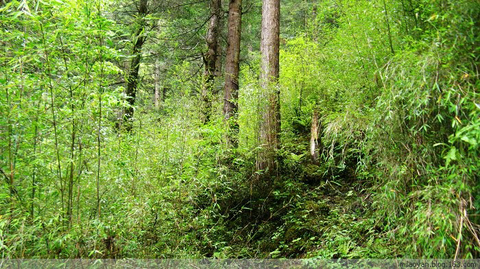
A paper Xu coauthored is published online in Functional Ecology. In this paper, we examined the spatial patterns of soil N ammonification and nitrification along a transect in eastern China and their controlling factors.
Soil gross N ammonification and nitrification from tropical to temperate forests in eastern China
Nitrogen (N) ammonification and nitrification are two primary microbial processes controlling the availability of soil ammonium (NH4+), a key nutrient for vegetative growth. The large-scale patterns of gross ammonification (GA) and gross nitrification (GN) rates represent soil microbial adaptations to different vegetative and environmental conditions. In this study, we investigated GA and GN rates in nine forest soils along a 3,700-km north–south transect in eastern China.
We used 15N-labelling techniques, along with field experiments and laboratory incubations, to assess in situ and potential rates of the GA and GN. The mean in situ GA rate was 4.9 ± 0.5 mg N kg−1 day−1, whereas the mean potential rate of GA was 32.0 ± 8.6 mg N kg−1 day−1. The mean in situ GN rate was 1.7 ± 0.3 mg N kg−1 day−1 (potential GN rate: 3.2 ± 0.6 mg N kg−1 day−1). GA was significantly higher than GN along the transect, and there were high variations in GA and GN among different forests. Significant relationships were identified between meteorological factors (temperature and precipitation) and the GA and GN rates during the sampling month (August 2013). However, the mean GA rate in primary forest was significantly lower in the Huzhong (HZ), Dongling (DL), Taiyue (TY) and Dinghu (DH) sites compared with other sites, whereas with the exception of the Liangshui (LS) sampling site, the mean GN rate in primary and secondary forests showed the same trends. Significant differences in GA rates were found between primary and secondary forests at the LS and Changbai (CB) sites, and differences were detected in GN rate at the HZ, LS and Jiulian (JL) sites.
Structural equation modelling analysis suggested that soil N contents, microbial biomass N pool sizes and bacterial abundance are the primary determinants of the in situ rates of GA and GN. The strong control of edaphic factors on GA and GN indicates a need to improve soil N models with more explicit representation of edaphic factors and their control on soil N transformations.
http://onlinelibrary.wiley.com/doi/10.1111/1365-2435.13024/full

